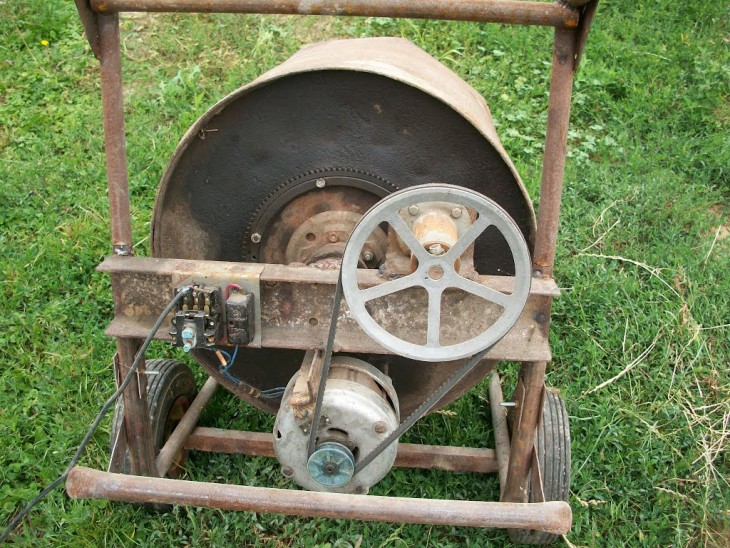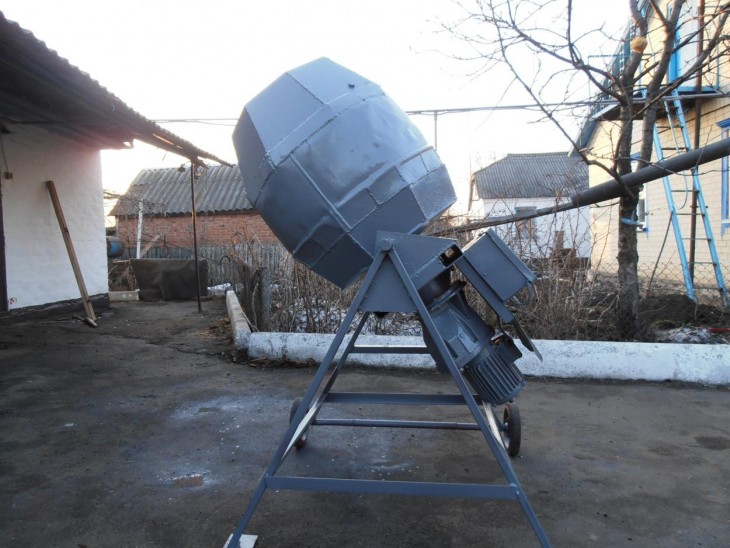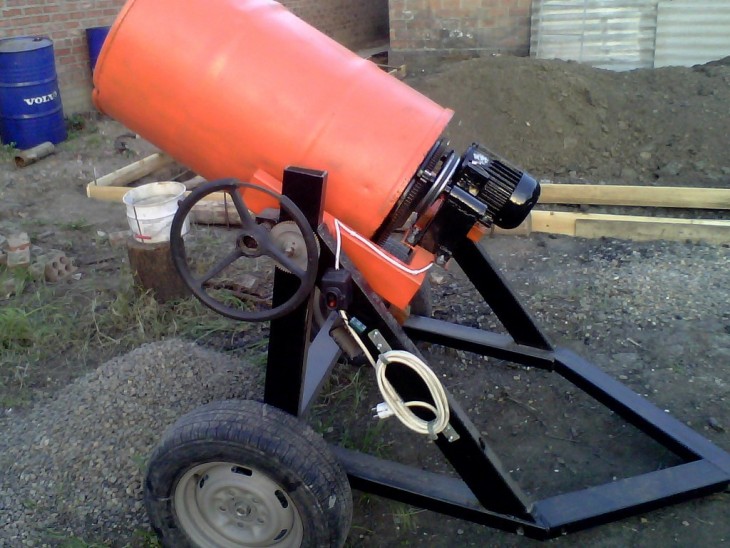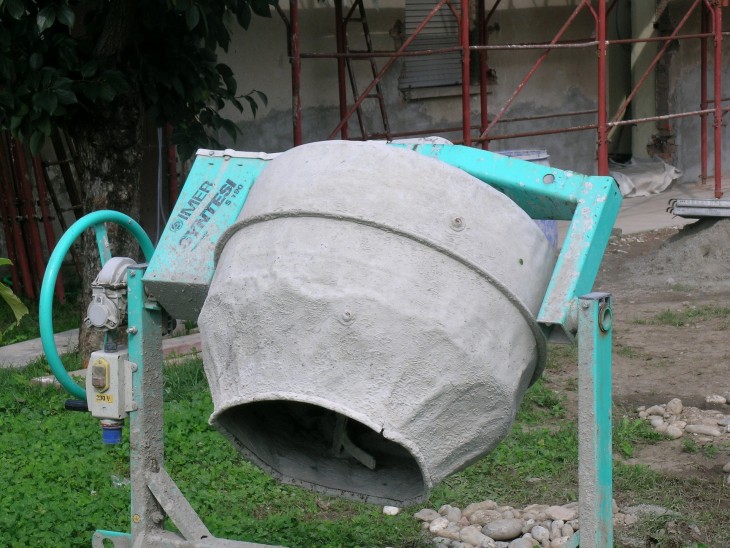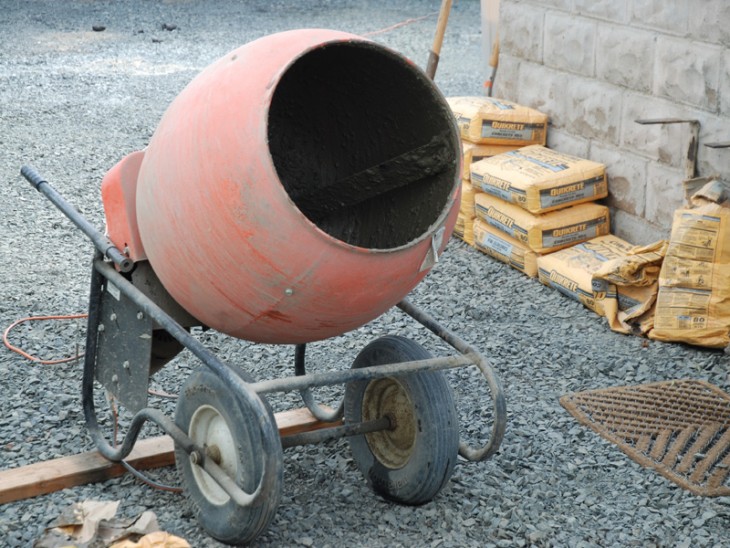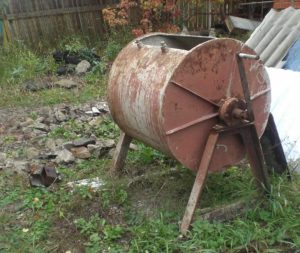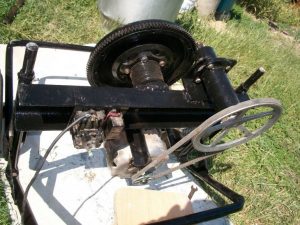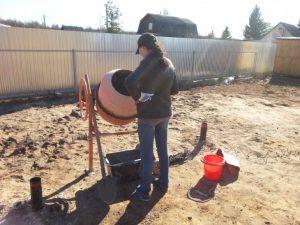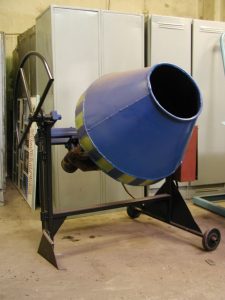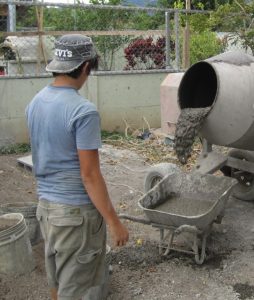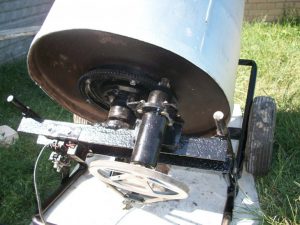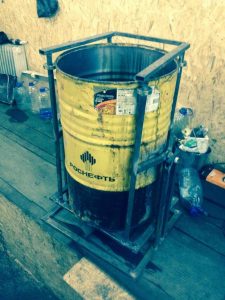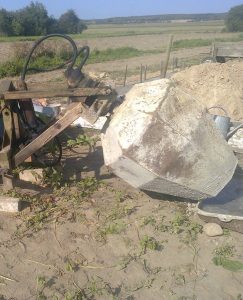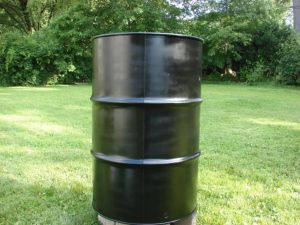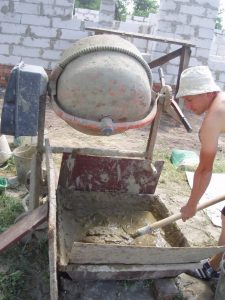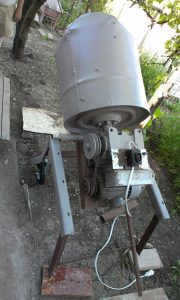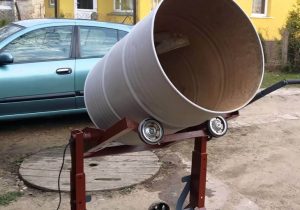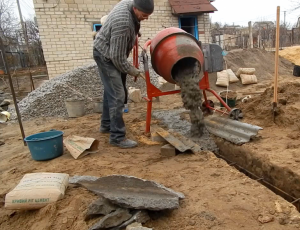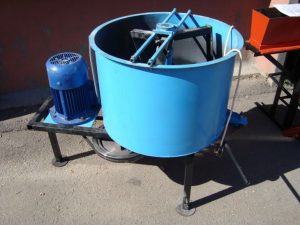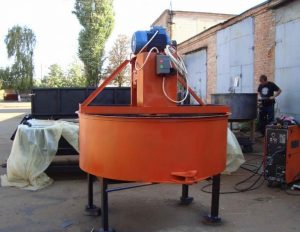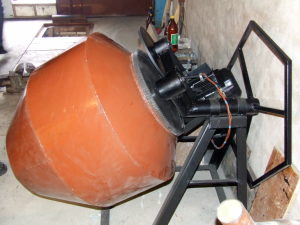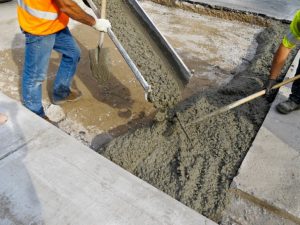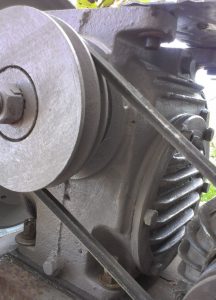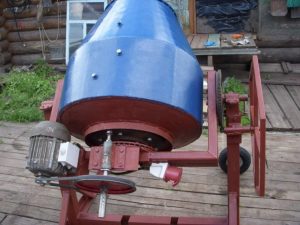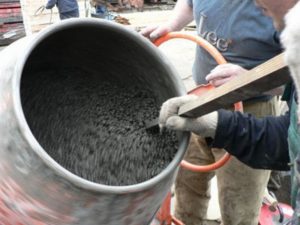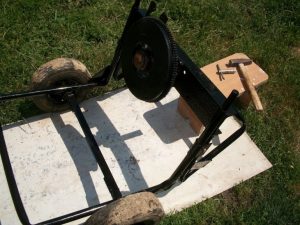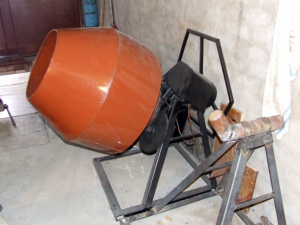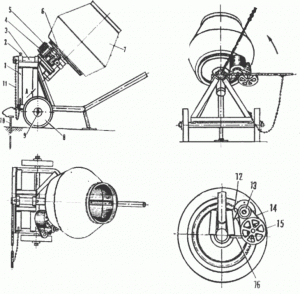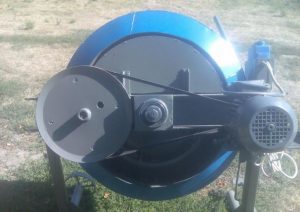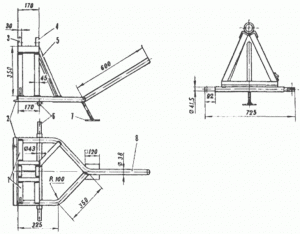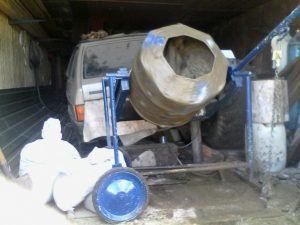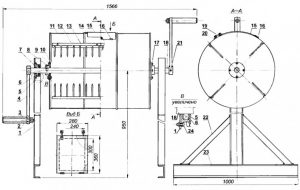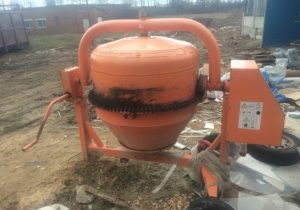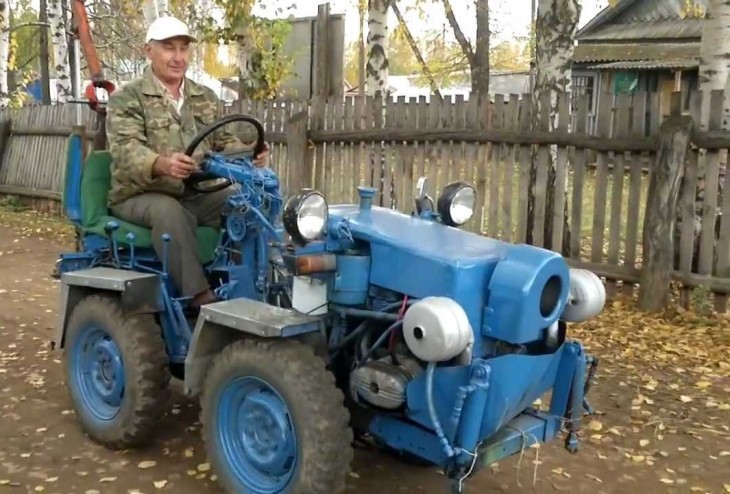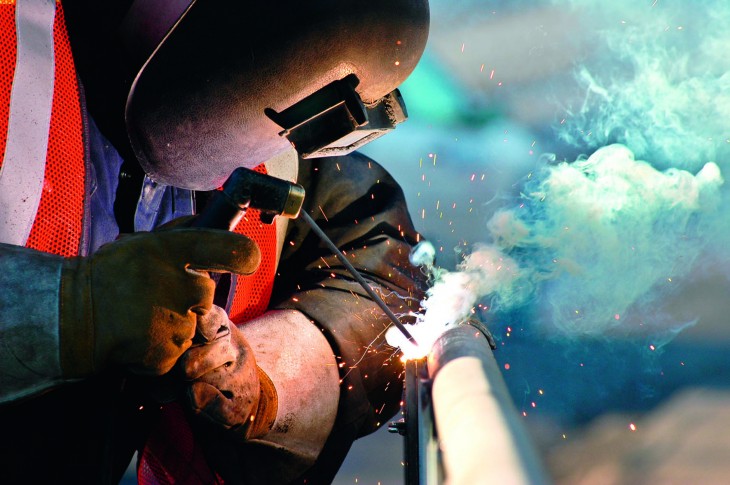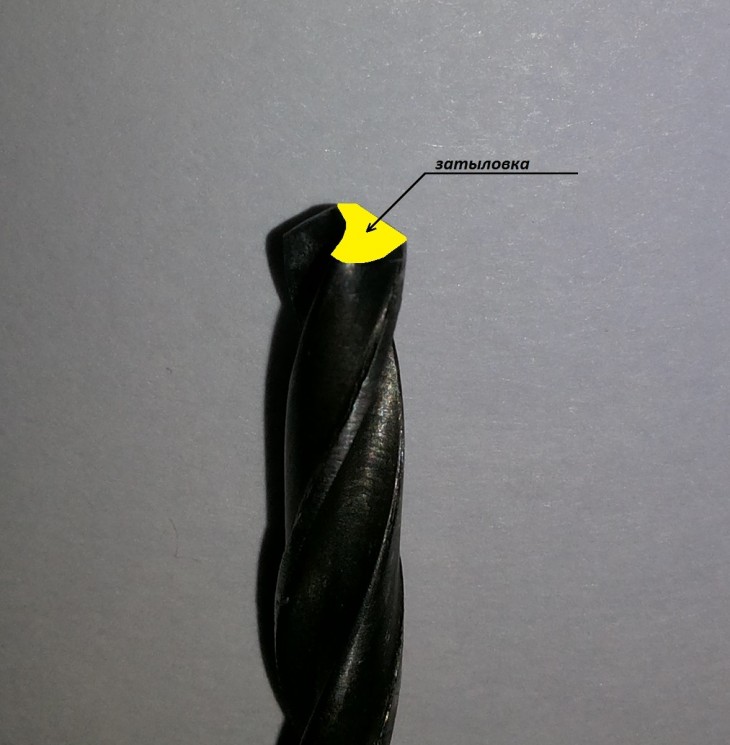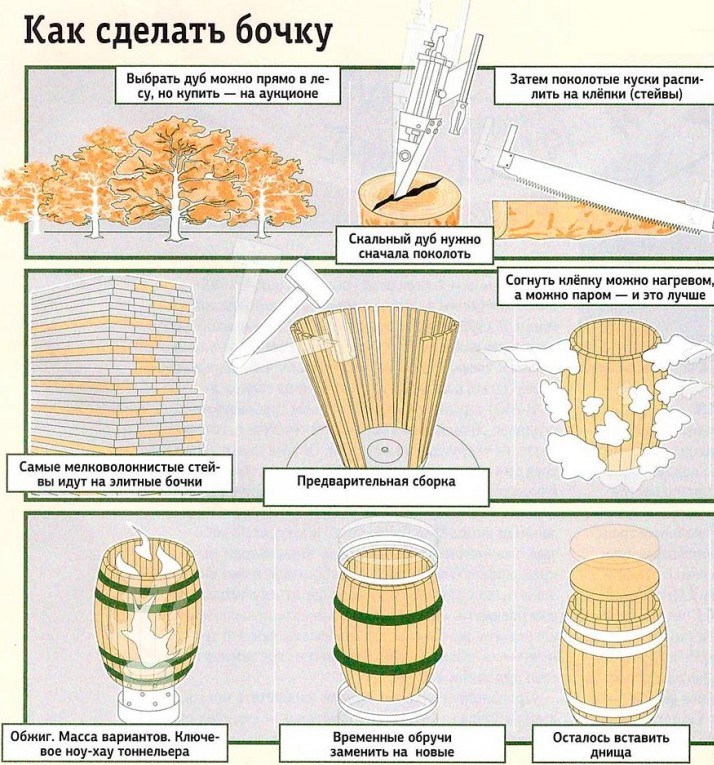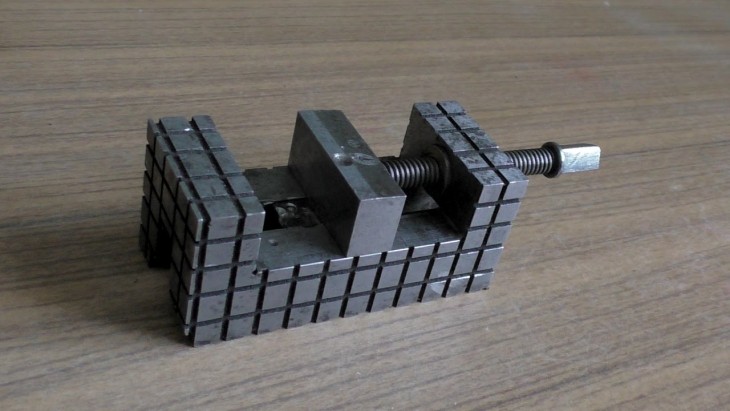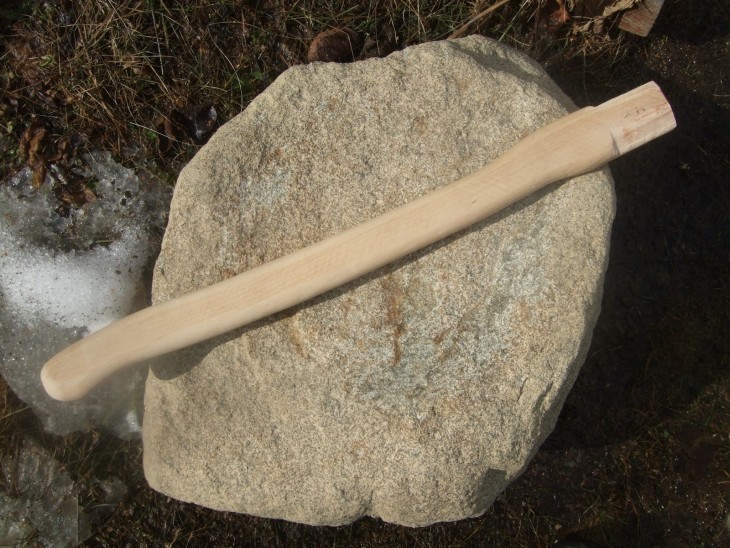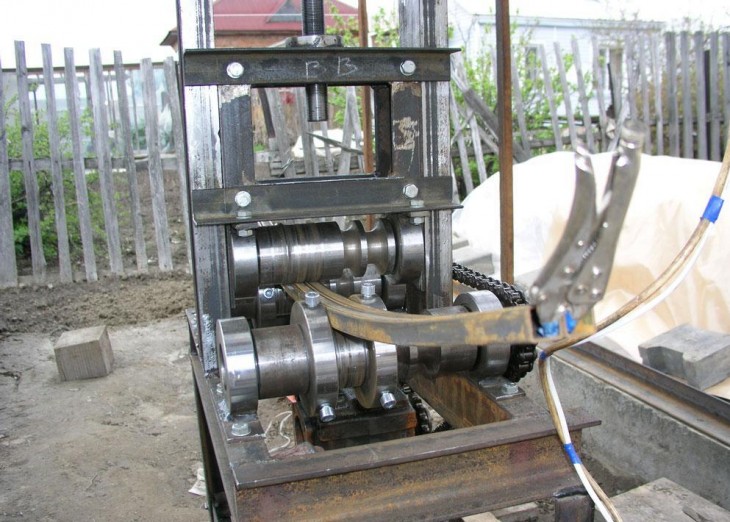If you have your own house or cottage, then you often come across the need to carry out construction work of one or another scale.
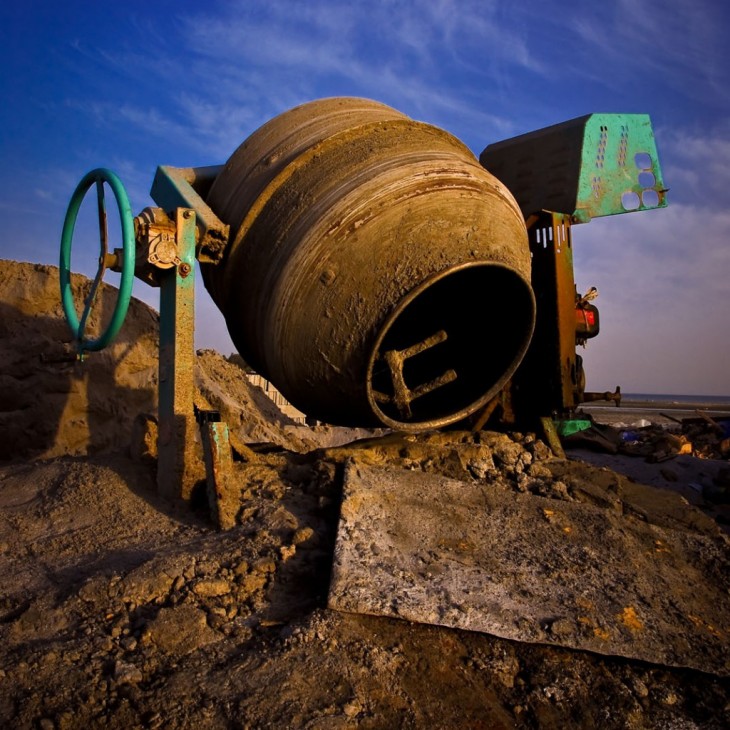
No construction can do without concrete - be it a gazebo, a fence, a terrace or a walkway.
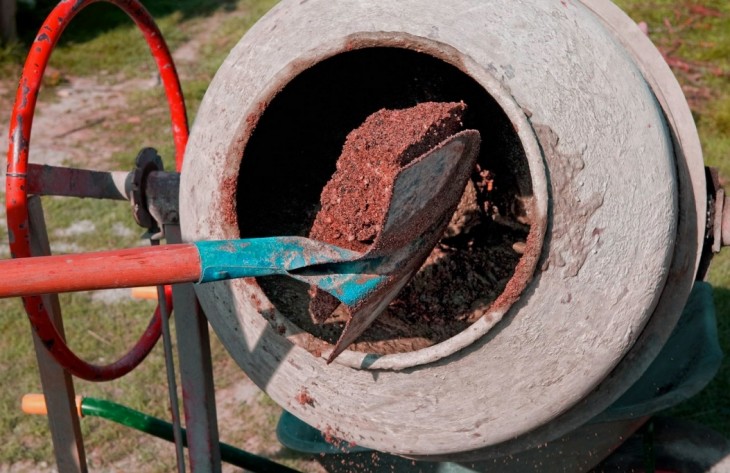
If you have planned several large buildings, you can place an order for ready-made factory concrete - it will be delivered directly to your site. The construction team usually does.
But this option has the following disadvantages:
- high price of concrete mix;
- You will have to purchase concrete volume mixer, i.e. several cubes. Not every construction site requires so much concrete;
- dense residential development may not allow the passage of heavy equipment.

There is another option - to rent a concrete mixer, but with frequent use it will be more expensive than acquiring it in property.

Due to all of the above, having your own concrete mixer is the best solution. To make such a necessary unit with one's own hand is quite feasible.
Review Content:
The advantages of a homemade concrete mixer
A self-made concrete mixer has the following advantages:
- She will have the shape you need;
- Such an aggregate has a low cost, since it can be made of material under your hands;
- Homemade concrete mixer is easy to maintain and repair;
- She can be proud of her neighbors and acquaintances.

Before making a concrete mixer, it is better to try out the purchased option on your own experience - offer your help to neighbors who have an industrial copy, or use the rental once. This will help to understand the principle of its action and choose the appropriate parameters.

Large size does not mean the best option. Such units are very energy consuming. Both small and large tanks limit the amount of concrete produced per 1 cycle. As a result, the choice of tank parameters should be approached very responsibly.
General technology for creating concrete mixers
To make a concrete mixer with your own hands, you will need a strong tank in the shape of a cylinder, a solid frame structure, a turning mechanism to unload the finished concrete, and a geared motor.
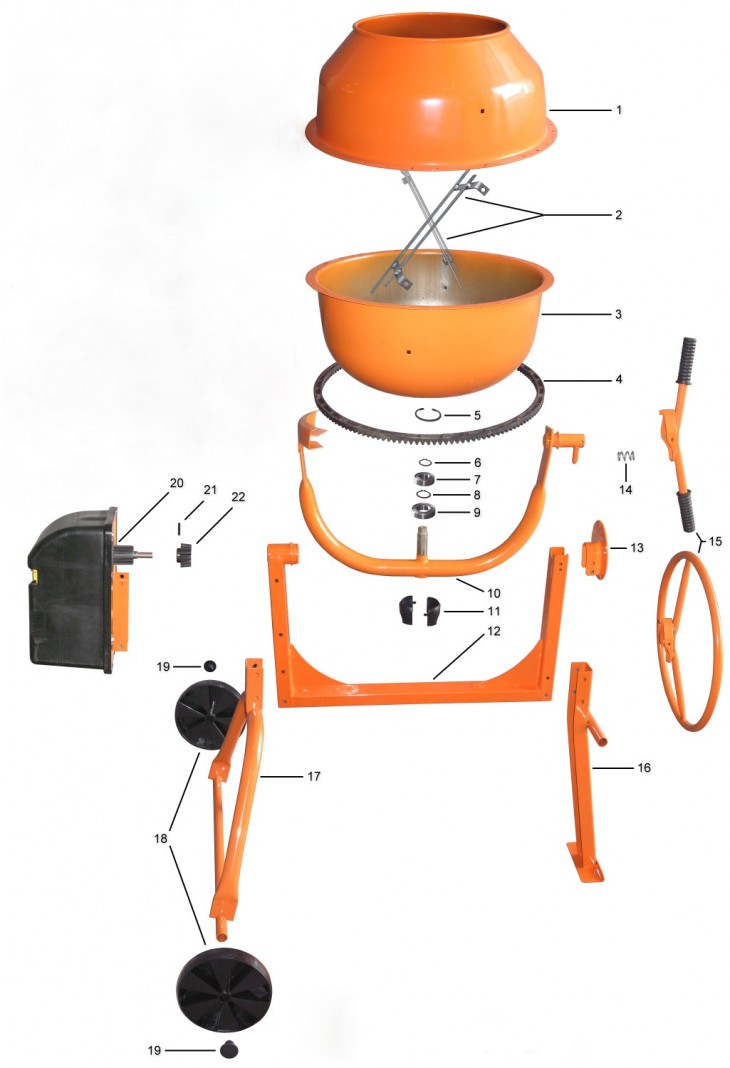
Do not be alarmed by so many necessary materials - many of them can be bought at a low price or found in a garage.
Manual concrete mixer
You will need:
- metal barrel, with a capacity of 100 - 200 l;
- steel corner or profile for the bed;
- two used bearings;
- a piece of metal pipe for the axis and handle.
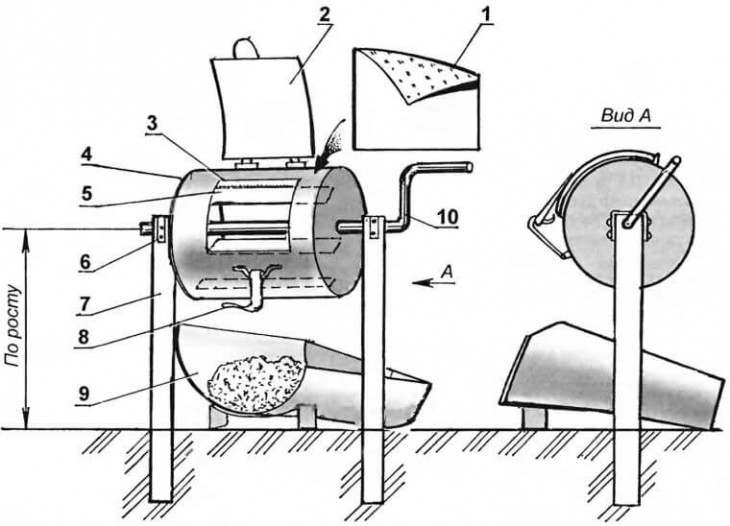
Of the tools you need a grinder and a welding machine.
- We cut a hole in the barrel in the form of a rectangle, forming a gap at the junction. Weld on the inner surface of the spills from the corner and lay it with rubber in order to seal.
- The lid will swing open outwards, therefore it is necessary to install strong hinges and a reliable lock. You can not brew the existing filler hole, the standard lid is quite reliable.
- Inside, we weld several blades of sheet steel with a thickness of 2-3 mm for mixing.
- In the center of the side parts we weld the bearings, fasten the hubs or insert a steel axis.
- We fix the barrel on the bed, weld a handle at one end, like a well. The concrete mixer is ready!
Electric Concrete Mixer
The essence of such a concrete mixer in a stationary tank and active mixing blades.

This unit has both pros and cons.

The advantage of a concrete mixer with an electric drive is that you do not need to make a sealed hole, as in a manual modification.
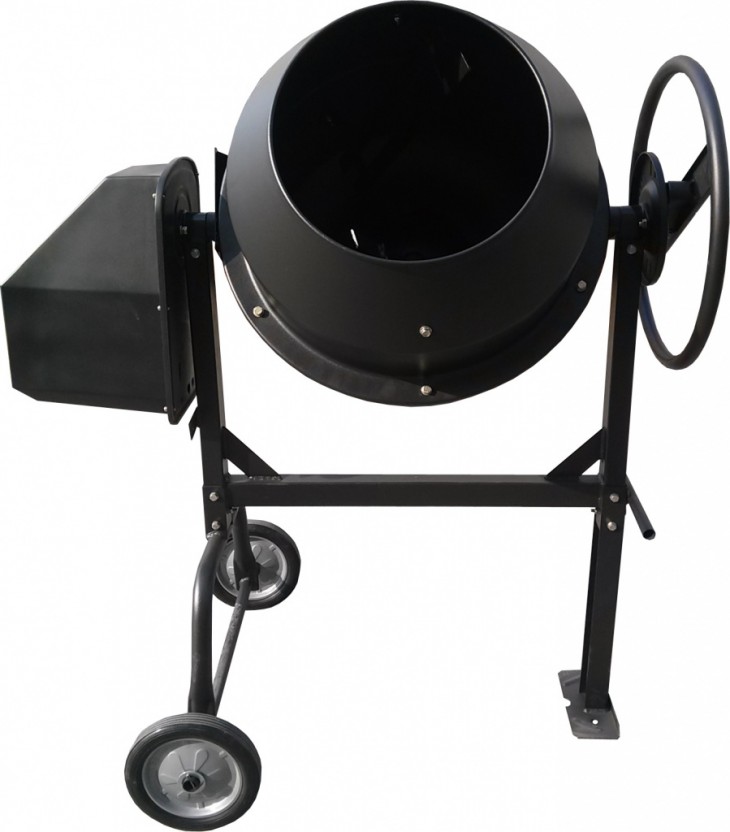
The minus is the need for the device of seals on the axis of the drive.
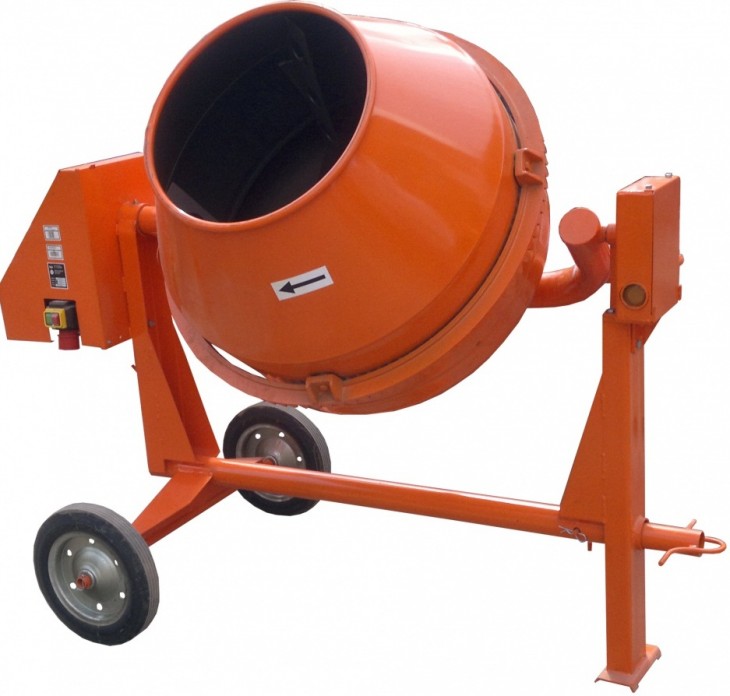
The tank is made of 200 liters of barrel, on which the walls are welded. The upper part is taken up by a grill. For the foundation, a profiled pipe is used. The tank is attached firmly. The initial components of the mortar are loaded from above, the ready concrete is drained thanks to a shutter with a rubber gasket.
Note!

The mixing shaft is made of an automobile cranked analog, the blades are made of corners and steel sheets welded to them, 3 mm thick. An oil seal is located at the shaft exit point to the gearbox.
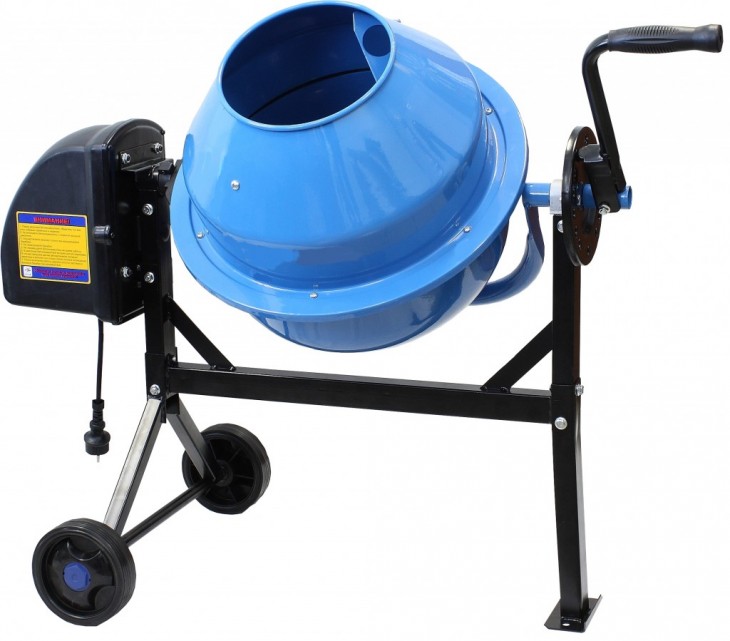
The engine is used from a crane. Its power is 5.5 kW. The gearbox is from there. The motor has 3 phases and the ability to change the direction of rotation.
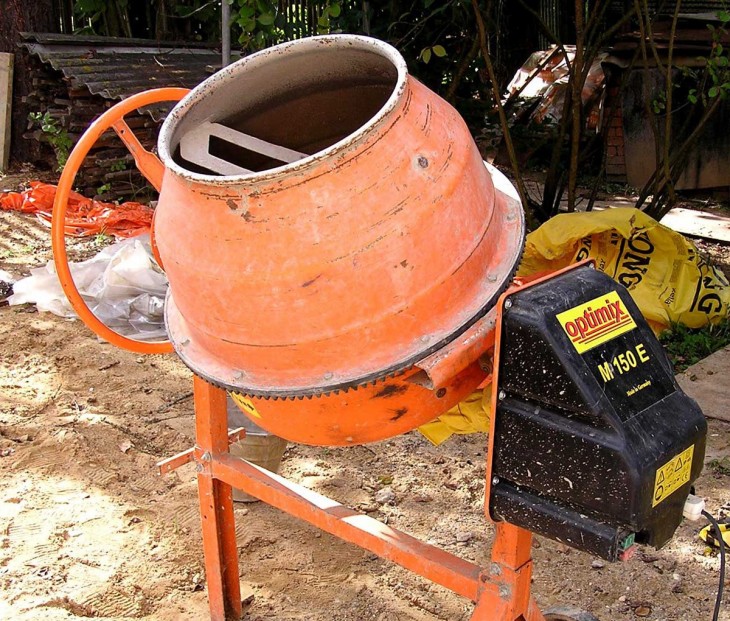
Under the working concrete mixer, a pallet is substituted, collecting water flowing out at the beginning. It is poured back into the concrete mixer.
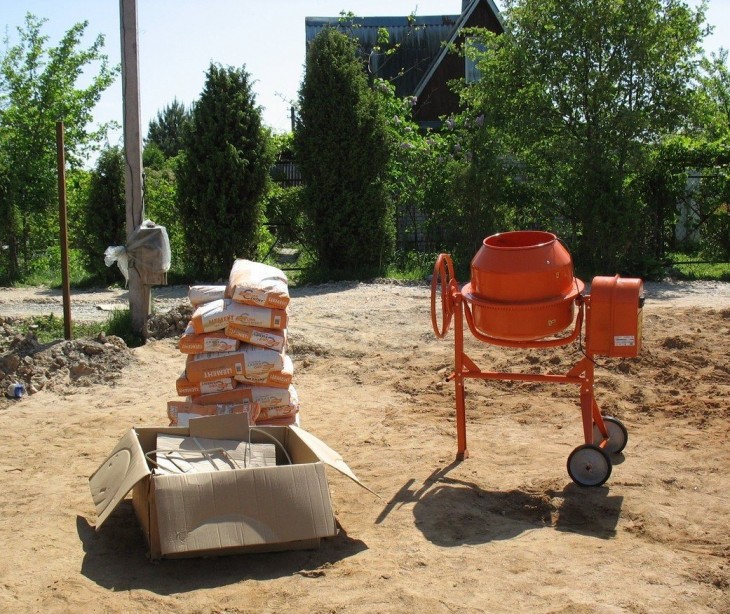
In conclusion, we note that the concrete mixer created by hand is better than analogues from China. We hope that this article will help you do this necessary thing yourself.

DIY concrete mixer photo

Note!
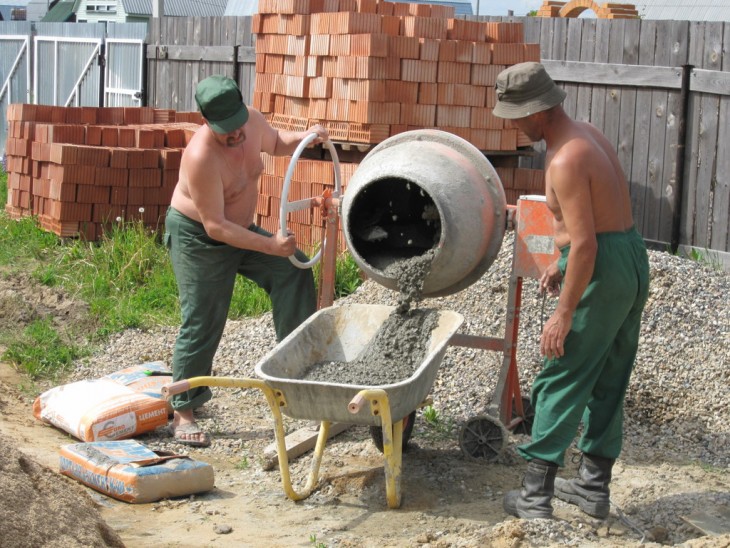

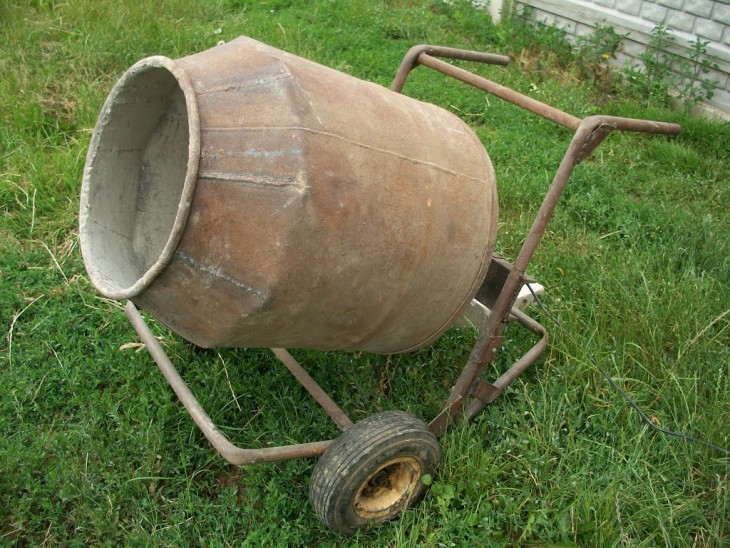
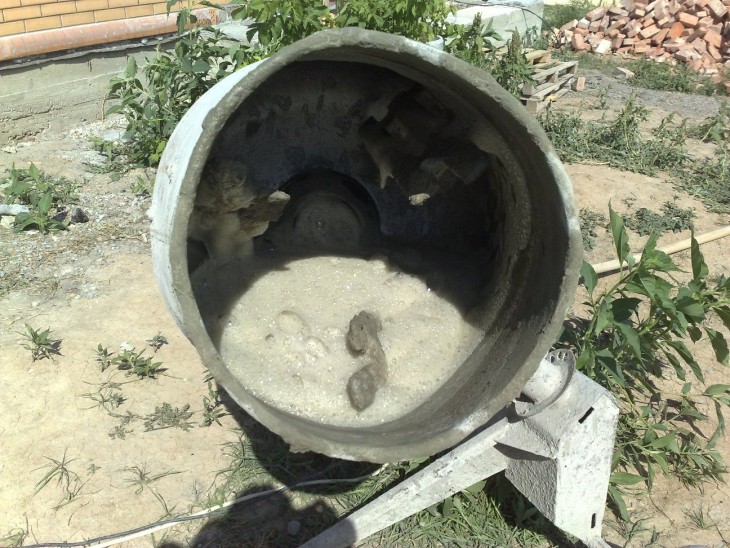

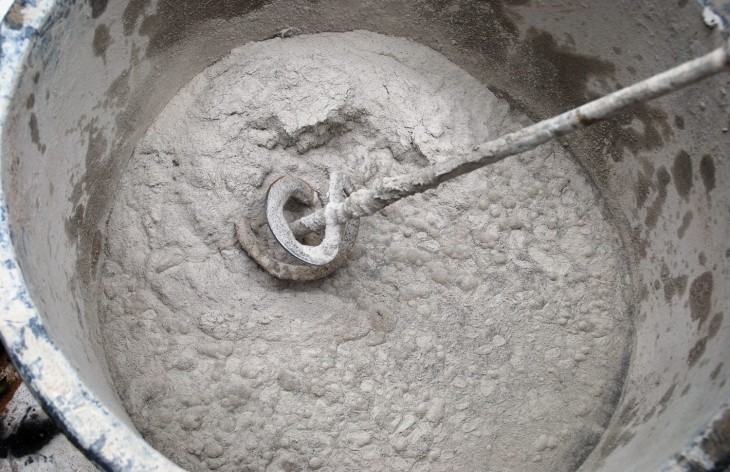
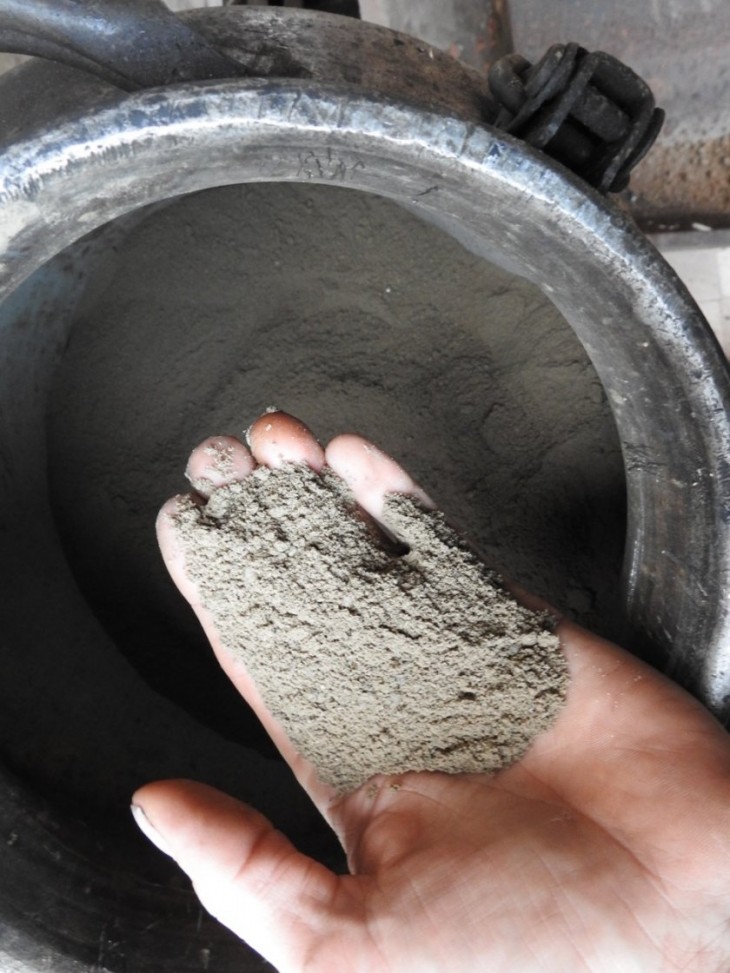

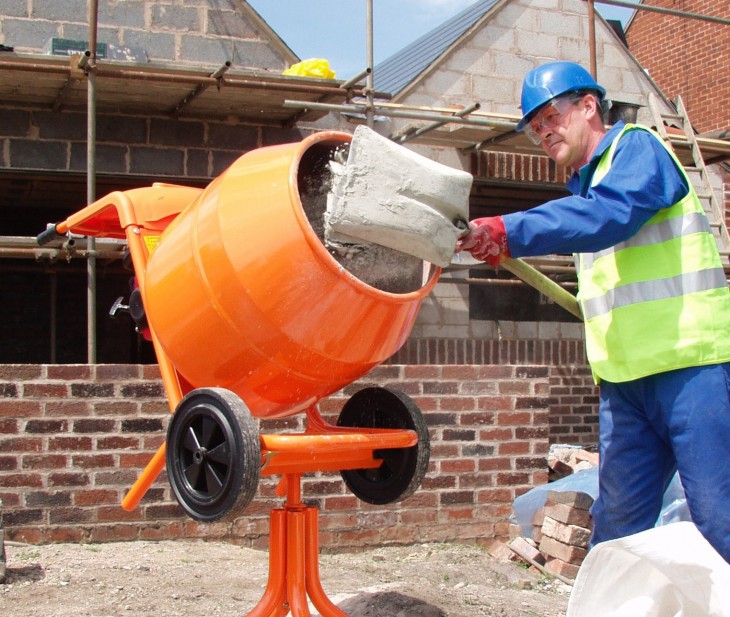
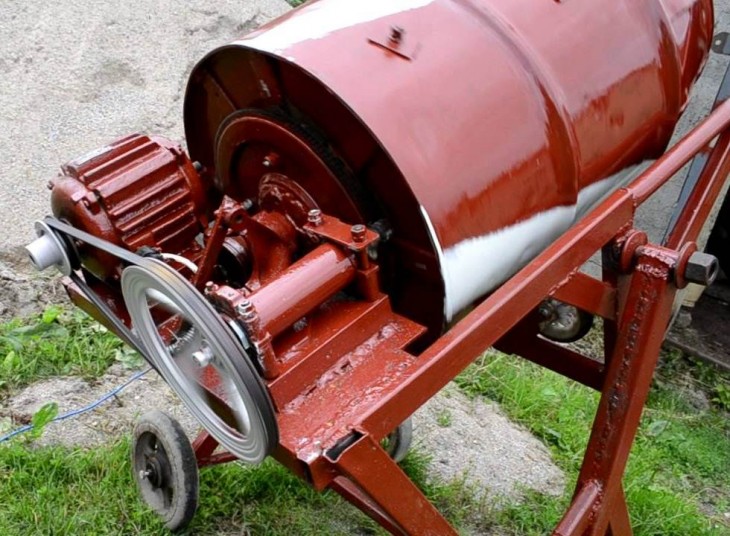
Note!
